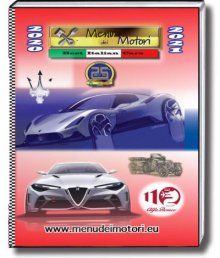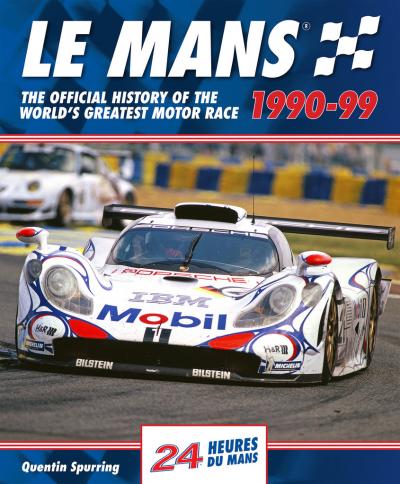
Officially licensed with the ACO, the organisers of the annual Le Mans 24 Hours race, this sumptuous book is the fifth title in a decade-by-decade series that is building up into a multi-volume set covering every race since 1923. Each year is exhaustively covered in vivid photographs, a detailed and insightful commentary, full results data and a glorious rendering of the official race poster. Compiled by an acknowledged authority of this legendary race, this series of books will be treasured by all enthusiasts of sports car racing.
Highly detailed year-by-year coverage of the decade’s ten races, giving over 30 pages of information and photographs for each year.
Official status provides a number of unique features, including the reproduction of the full-colour race poster artwork for each year and photographs from the ACO’s archives.
The images are entirely in colour, and the emphasis is on photographs that enthusiasts will not have seen before.
The story of each race is told through photographs and an accompanying commentary.
Complete data for each year includes technical regulations, entry list, circuit changes (with diagram), lap chart, full results and category awards.
The whole work is beautifully designed and presented.
The 1990s was a richly varied decade, with winning cars from a wide range of manufacturers: Jaguar, Mazda, Peugeot, Dauer, McLaren, Porsche and BMW.
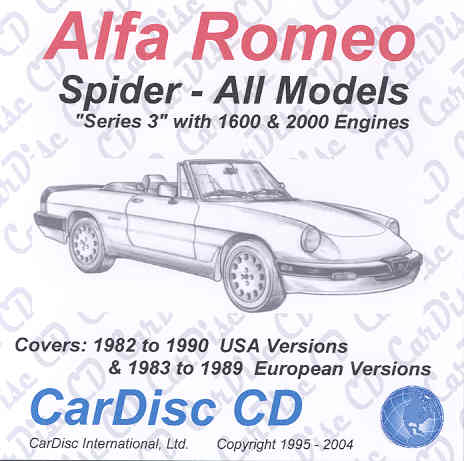
The Alfa Romeo Spider (Series 3) CarDisc CD is a CD-Rom containing images of the original factory publications. This one CD includes the factory shop manuals, owner’s manual, sales brochures, technical specifications, technical service bulletins, wiring diagrams, photo gallery and a short Alfa Romeo Heritage video. It covers all the USA models from 1982 through 1990 and also the European Specification Spiders with either the 1600 or 2000 engine from 1983 through 1989. It also covers all the various Spider models such as: Veloce, Graduate and Quadrifoglio.
This is a very comprehensive collection of publications that is indispensable to anyone that owns, maintains or is restoring their 115 series Alfa Romeo Spider. These publications are rare, hard to find and expensive. If you could find and purchase all of these original publications you would spend over $400 US!
Alfa Romeo 164 12 v 1990-1993
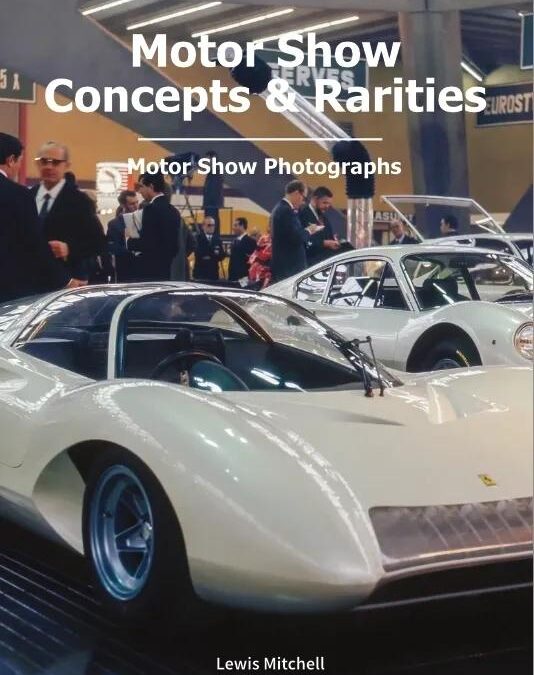
For over 80 years, visitors to International Auto Shows have stood in awe and watched in wonder as these fantasies in steel and glass fibre were unveiled.
Covering the period from the 1950s through to the 1990s, this book takes you on a historic journey using original Motor Show Photographs, the majority of which are previously unseen.
Featuring stunning one–offs and rarities from legendary design houses such as Bertone and Ghia as well as manufacturers as diverse as Porsche, Ferrari and Saab.
In Motor Show Concepts & Rarities you will find around 120 cars on display!
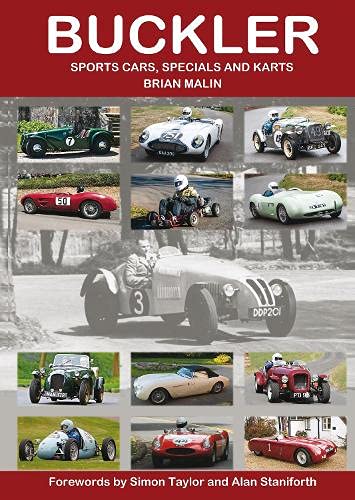
Although they were born 18 years apart, Derek Buckler and Colin Chapman were contemporaries when it came to designing and building ground-breaking sports cars in the late 1940s and early ’50s. They had much in common. Both were innovators, especially in areas of chassis design and improving the handling characteristics of their cars. Both founded successful companies and both died relatively young, Chapman in December, 1982, at the age of 54, and Buckler in 1964 at just 53 years of age. Yet, while Chapman’s Lotus went on to achieve worldwide fame, the name Buckler remains comparatively little known.
Special building was popular in the 1950s, mostly using ‘donor’ chassis from Austin 7 or Ford or simple ‘ladder’ frames but Buckler offered a multi-tubular space frame which was both stronger and lighter and, moreover, available in different models to suit different applications. He was also always ready to adapt his products to his customers’ requirements. In all of this, Buckler’s aim was to provide the impecunious enthusiast with a versatile sporting vehicle which could be used as daily transport during the week and, at weekends, in a wide range of motor sporting events from trials and driving tests to out and out racing. Often, however, the resulting Special would carry a name that concealed the Buckler contribution and a major part of the significance of Malin’s book and the vast amount of painstaking research put into it by its author is that much of that contribution is now revealed.
Buckler also, of course, made a range of complete cars starting with the versatile Mk5 and 6 and going on to encompass DD1 and DD2 with De Dion rear ends and the BB100 with backbone chassis introduced considerably before Lotus’s Elan and their other similarly based models. When karting became popular in the early 1960s, Buckler’s space frame technology found another application for which it was ideal and it became a major player in this burgeoning branch of motor sport. Buckler was also successful with its range of accessories including engine and transmission components and most notably its much admired close-ratio gears.
Brian Malin, the author, first owned a Buckler car in the 1970s and today competes in his Mk 5 in hill climbs and other events. He is an active member of the Buckler Register as well as the British Historic Kart Club and is often to be seen racing or demonstrating his Buckler kart so he is well placed to compile this comprehensive history of all things Buckler. It was first made available in loose-leaf form as long ago as 1990 but this is its first publication as a fully-fledged book, revised, updated and with additional material. Chassis design guru – and Buckler owner – the late Alan Staniforth provided the original foreword and this has been updated and included along with a new foreword by commentator and doyen of motor sport journalists, Simon Taylor.
The fourteen chapters begin with ‘Buckler and the Company’, cover the production and racing cars with some individual histories, the Buckler accessories including one chapter on the badges alone, overseas distribution – New Zealand was a particularly strong market for Buckler – and a fascinating section on the car advertisements before going on to cover the kart story in similar detail. The same number of appendices include reproductions of road tests, articles written by Derek Buckler, specifications of close-ratio gears and Buckler-tuned Ford engines, kart track tests and even one on Buckler letterheads. Malin’s work is truly encyclopaedic and therefore remarkable value for money not just as a reference on the Buckler marque but for its entertaining insight into the world of amateur motor sport of its time. The hundreds of illustrations range from reproductions of high quality contemporary and recent photographs to some admittedly lower quality originals, some of them obviously retouched to improve clarity, whose inclusion is well justified for their essential contribution to the Buckler story.
Brian Malin is to be congratulated for his perseverance in finally bringing to publication a book which is, to all intents and purposes, the full Buckler story.
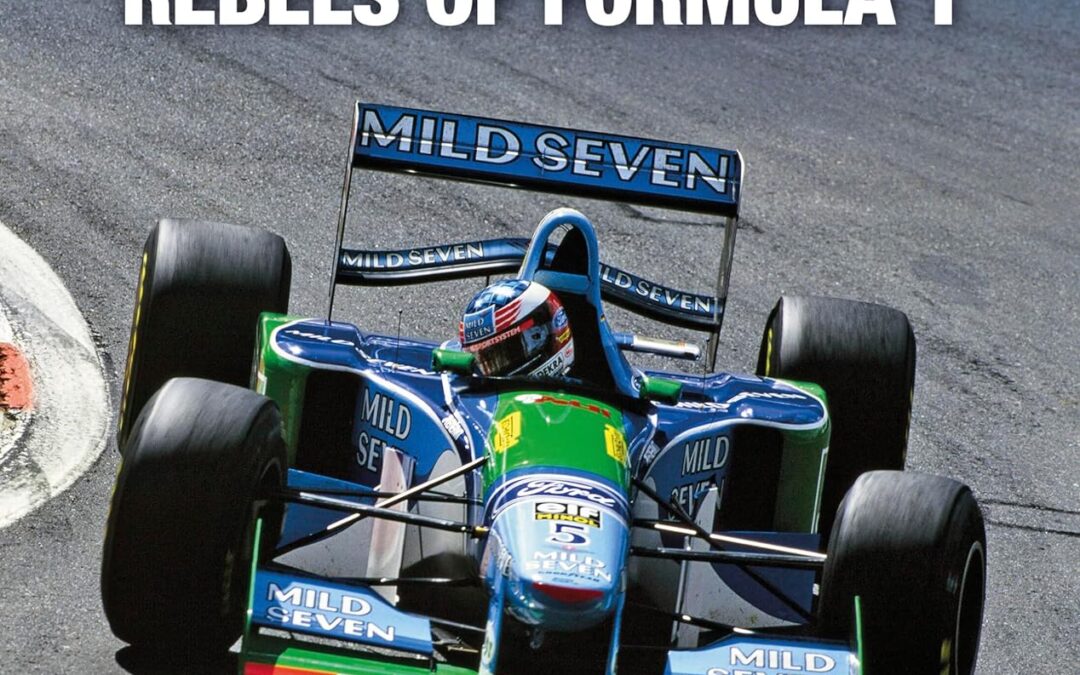
Unconventional, flamboyant, ground-breaking, colourful, controversial — the Benetton Formula 1 team was all of those things.
Defying perceptions as the rebels of Formula 1, Benetton achieved great success, particularly in the two glorious seasons of 1994 and 1995 when the team swept aside the big names — Williams, McLaren and Ferrari — to claim back-to-back World Championship titles for up-and-coming Michael Schumacher. This book tells the entire 1986–2001 history of the Benetton team for the first time with insightful contributions from many of the key participants, including Flavio Briatore, Alessandro Benetton, Pat Symonds and Rory Byrne.
- Beginnings: after three seasons in F1 as a sponsor, Benetton purchases ailing Toleman and creates its own BMW-powered team for 1986, taking a first win that year with Gerhard Berger.
- Growing in stature: with Flavio Briatore arriving to run the team and using Ford engines, Benetton edges towards consistently strong performances, including two consecutive wins for Nelson Piquet at the end of 1990.
- The key driver: the inspired signing of Michael Schumacher takes Benetton closer to glory during a 1992–93 high-tech period that sees the Williams team reign supreme.
- The breakthrough year: Following tragedy, black flags, disqualifications, a pitlane inferno and political maneuvring, the tumultuous 1994 season ends with Schumacher sealing the World Championship title for Benetton after a controversial clash with rival Damon Hill.
- The best year: Transferring to Renault engines, Benetton dominates in 1995, Schumacher taking a second consecutive crown thanks to nine wins and Johnny Herbert supporting to help deliver the constructors’ title too.
- The hangover: After Schumacher’s departure to Ferrari and the loss of factory Renault engines, Benetton struggles to maintain its status in 1996–97 with Gerhard

On 2 August 1990, Saddam Hussein’s armed forces invaded and occupied Kuwait. A swift international response followed, which, led by the United States and the United Kingdom, saw the formation of a coalition that formed the largest military alliance seen since the end of the Second World War.
Among the many RAF units deployed under Operation Granby, the codename given to the British military operations during the conflict, was 41 Squadron, with elements taken from 54 Squadron and 226 OCU, which was equipped with the ubiquitous Jaguar GR1 single-seat all-weather tactical strike and ground-attack fighter. In late 1990, the squadron duly despatched a total of twelve aircraft, which soon became known for their distinctive desert pink camouflage, and twenty-two pilots from their base at RAF Coltishall.
Initially conducting low-level strikes, for which the Jaguar Force had always been intended, over the weeks that followed 41 Squadron switched to more unusual medium-level missions. In total, the men and machines of 41 Squadron conducted a total of 617 sorties during Operation Granby.
To complete this remarkable description of 41 Squadron’s part in the liberation of Kuwait, the author has interviewed a number of these pilots. As well as these veterans’ personal reflections, Danny Burt also explores the Jaguars’ record on air-to-ground combat and its performance in theatre, the various upgrades the type receive, and the unique nose art that each aircraft carried. Many of the pictures in this highly illustrated publication have never been published before.
The story is completed by the recovery by the author of one of the Jaguar GR1s flown in the Gulf War Rescued from an Army range in South Wales, the aircraft was moved to RAF Coningsby where its restoration, including the return of its Operation Granby camouflage, is underway.
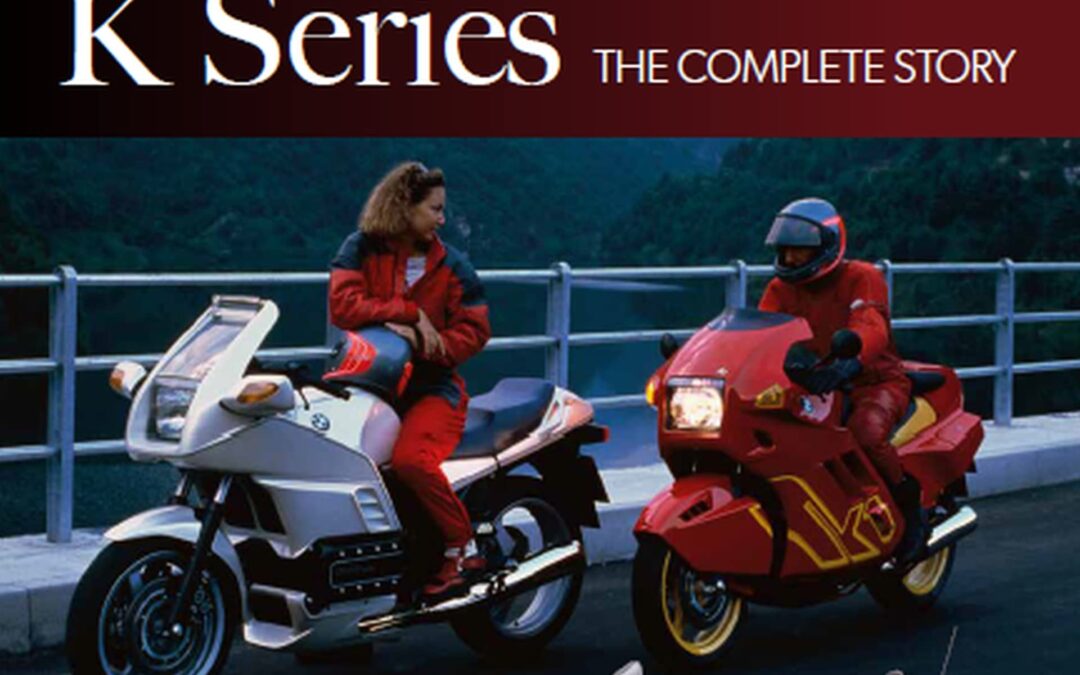
While BMW motorcycles remain mostly associated with its R-series shaft-drive boxer twins, it’s the K-series liquid-cooled ‘multis’ that have been – and remain – the German firm’s most advanced, radical and downright wacky bikes of all. Launched in 1983 to propel BMW into a whole new era, the K-series has included some of the world’s most innovative and interesting motorcycles. From the original liquid-cooled, fuel-injected K100, to the radically aerodynamic K1 of the 1980s; the ultra-powerful K1200RS and space age K1200LT of the 1990s; and the ‘Duolever’ K1200S and 6-cylinder K1600 of the 2000s and beyond, BMW’s ‘Ks’ have always been special, but also so advanced and pioneering that they’ve helped shape the whole of modern motorcycling. BMW expert Phil West, author of BMW Airhead Twins and BMW GS, also published by Crowood, has again painstakingly researched their complete history, found pictures never published before and recounts the whole K-Series story in a comprehensive and engaging tale.
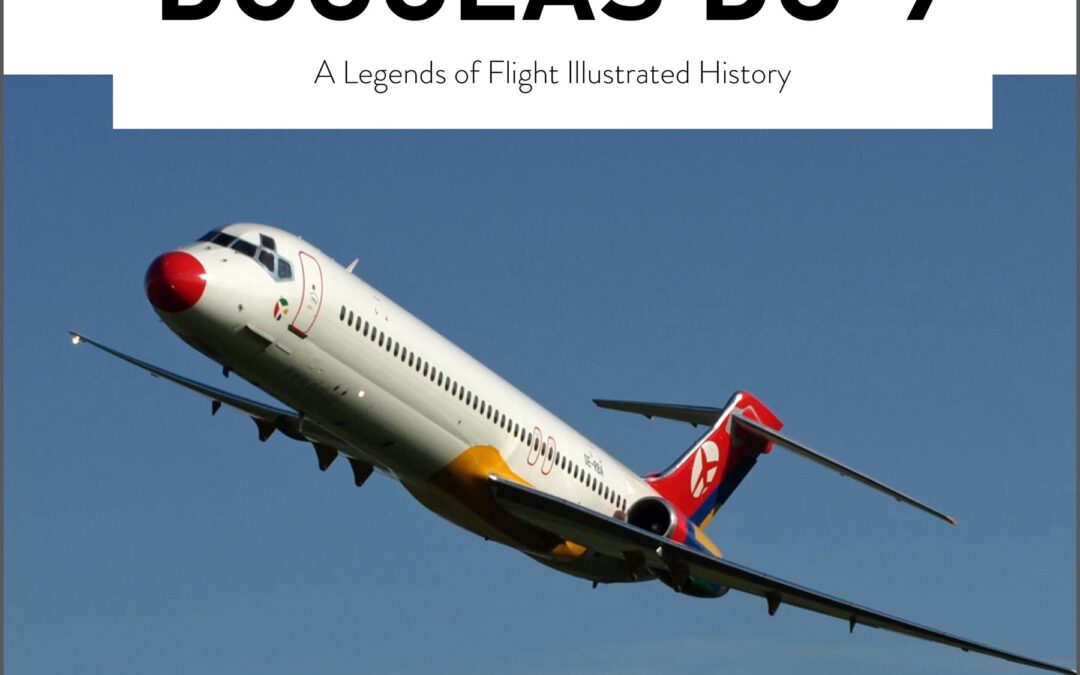
With their unmistakable silhouette, the Douglas DC-9 family of twin-engine passenger jets was a familiar sight on many of the world’s airfields well into the 1990s. Douglas initiated development of the DC-9 at the beginning of the 1960s and, in doing so, developed an entirely new market—the short-range jet airliner. The DC-9 became an instant bestseller for Douglas. To this day, the DC-9, and its MD-80 and -90 variants, are among the most successful passenger airliners ever produced, with nearly 1,000 examples being produced from 1965 to 1982. In this book you will learn everything from the first designs to its gradual elimination from the market by more-modern designs from Airbus and Boeing. The history of the DC-9’s design, development, and operational use is presented in detail in this book, as is its use by many of the world’s most famous airlines, including Delta, Eastern, TWA, USAir, Air Canada, Swissair, Finnair, KLM, and Qantas. Technical specifications for the DC-9 and its variants, as well as period photographs, bring to life the fascinating history of Douglas’s most successful commercial jet airliner.
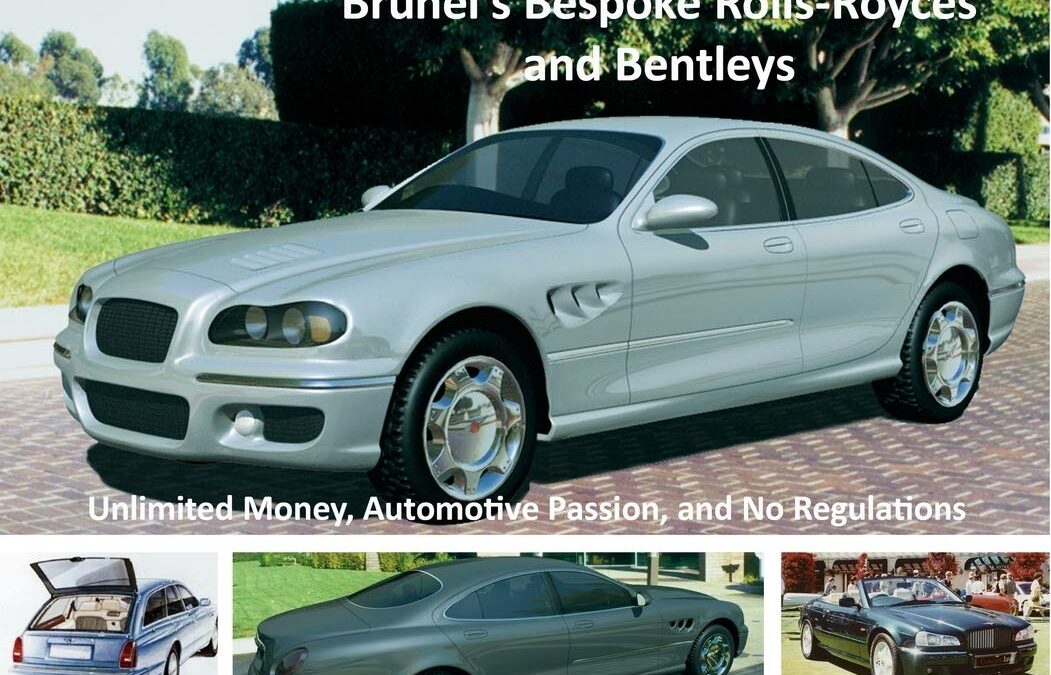
Few publications have gone into any great detail about the secretive collection of coachbuilt Rolls-Royce motorcars and Bentleys commissioned by Sultan Hassanal Bolkiah and his brother, Prince Jeffri, of Brunei. The Sultan, often described as the world’s richest man in the 1990s, has become a living legend for being the one person who has lived the dream that all car enthusiasts have; having the wherewithal to turn his dreams into reality, be it with cars, planes, or homes. More importantly, besides having the money to achieve his automotive dreams, he controlled all of the laws and vehicle regulations in his country. This meant that he didn’t have to comply with the pesky regulations and safety laws that effectively ended the coachbuilding business elsewhere in the world, even for the ultra-rich. This book delves into all of the information that is known about these spectacular motorcars.
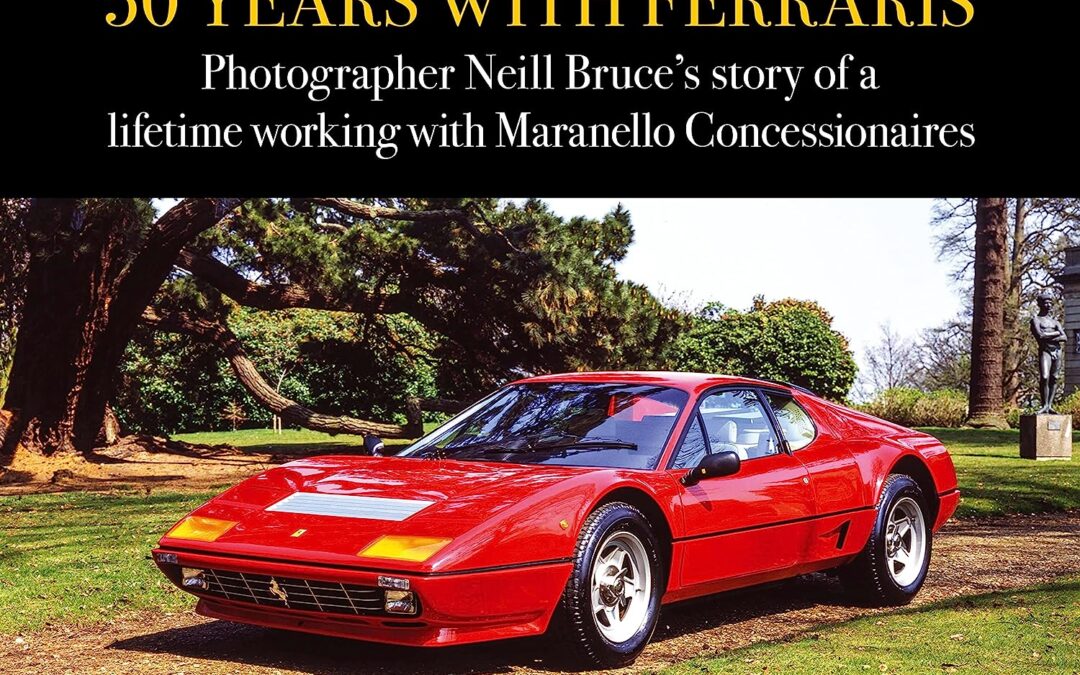
50 Years with Ferraris takes the reader behind the scenes at Maranello Concessionaires Ltd, Britain’s famous Surrey-based importer of Ferraris founded by Colonel Ronnie Hoare.
When Neill Bruce first photographed a Ferrari road car, a Dino 246 GT, in 1971, his work so impressed the powers-that-be at Maranello Concessionaires that they commissioned him to do all their promotional photography thereafter. Whether shooting production cars, factory scenes or motor show stands, he has been in Ferrari’s orbit ever since.
- Top-quality photography, originally shot on large-format film and reproduced to today’s highest standards on gloss art paper.
- Road cars of the 1970s, including Dino 246 GT, 365 GTC4, 365 GTB4 ‘Daytona’, 365 GT4 Berlinetta Boxer, 308 GT4 2+2 and 308 GTB.
- Evocative photography of a visit to the Maranello factory in 1973, including a meeting with Enzo Ferrari and tours of the main factory, Scaglietti’s body-manufacturing facility and the Fiorano test track.
- Road cars of the 1980s, including 400i, BB 512i, Mondial QV Cabriolet, Testarossa, 288 GTO and 328 GTB.
- Inside the Maranello Concessionaires workshops, showing all sorts of fascinating scenes such as servicing, body repair and the paint shop.
- Road cars of the 1990s, including F40, 412, 348 ts, Mondial t, 512 TR, 456 GT 2+2 and 348 Spider.
- Insights into the techniques and procedures involved in car photography.
The author presents some of his best pictures — the great majority in colour — and tells engaging stories about how they came about, including some of the mishaps along the way.

The story of the iconic dirt track that defined Southern California racing. It began in 1903 as a horse track, then as a one mile dirt track in L.A., then as New Ascot Raceway in East L.A. which became Legion Ascot and finally Southern Ascot in Southgate.
Then, Los Angeles Speedway was built in 1957 on the site of a former landfill just south of Gardena. The promoter got into financial difficulties and it became New Ascot Stadium and eventually just Ascot. Everyone raced there, sprint cars, stock cars, midgets, buggies and motorcycles. 90 Indy 500 drivers raced there. Names like A.J. Foyt, Rick Mears and Parnelli Jones were regulars. It was said that “if you haven’t raced Ascot, you haven’t raced”. Read the book to see why it closed in 1990. Written in scrapbook style, decade by decade, full of newspaper and magazine articles, photos and stories from those who were there.
399 Pages – 8 1/2 x 11 – B&W. Comes with a DVD of all the photos and newspaper / magazine articles in the book plus an assortment of videos.

Realize your Ford Coyote engine’s full potential by using this detailed resource as a guide to select the right parts for the street or the strip.
Veteran Ford writer and historian, Jim Smart, explains and highlights all of the latest and greatest options to achieve more horsepower and torque, and of course, faster quarter-mile times in Ford Coyote Engines: How to Build Max Performance-Revised Edition.
In this Revised Edition, now covering Generation III engines as well as Generation I & II, upgrades included are engine building techniques, cold-air induction kits, supercharger and pulley kits, better exhaust headers, fuel system and ECU tuning upgrades, and more. Both Ford and the aftermarket have produced an array of parts to squeeze even more power out of your Coyote.
Ford introduced its first “clean slate design” V-8 engines in the early 1990s in Ford, Lincoln, and Mercury models. Known as the “Modular” engine family, the 4.6L engines employed new overhead cams, multi-valve performance, distributorless ignition, and more. This engine had new technology for its time, and it proved to be an extremely durable workhorse that logged hundreds of thousands of miles in police and taxi applications as well as light-duty trucks. And, of course, hotter versions, and even supercharged versions, found their way into performance applications such as Mustang GTs and Cobras.
By 2011, Ford wanted something hotter and more current, especially for its flagship Mustang GT and GT350 models, which were suddenly competing with new 6.2L LS3 engines in Camaros and 6.4L Hemi engines in Challengers. Enter Ford’s new 5.0L “Coyote” engine with Twin Independent Variable Cam Timing (Ti-VCT); it was an evolution of the earlier 4.6L and 5.4L Modular designs. Although the new Coyote engine had increased displacement, it still had far fewer cubes than the competition. Despite less displacement, the Coyote could hold its own against bigger Chevy and Chrysler mills thanks to advanced technology, such as 4V heads with better port and valvetrain geometry. The Coyote is also Ford’s first foray into technology that includes Ti-VCT and cam-torque-actuated (CTA) function, which is a fancy way of saying variable cam timing for an incredible power curve over a broader RPM range. Now, in Generation III, Ford has implement a system using both Port and Direct Fuel Injection, taking advantage of the benefits of both systems in a single application.
Even with all of this new technology, there is always room for improvement. If you are looking for even more power from your new Coyote, look no further than this volume.
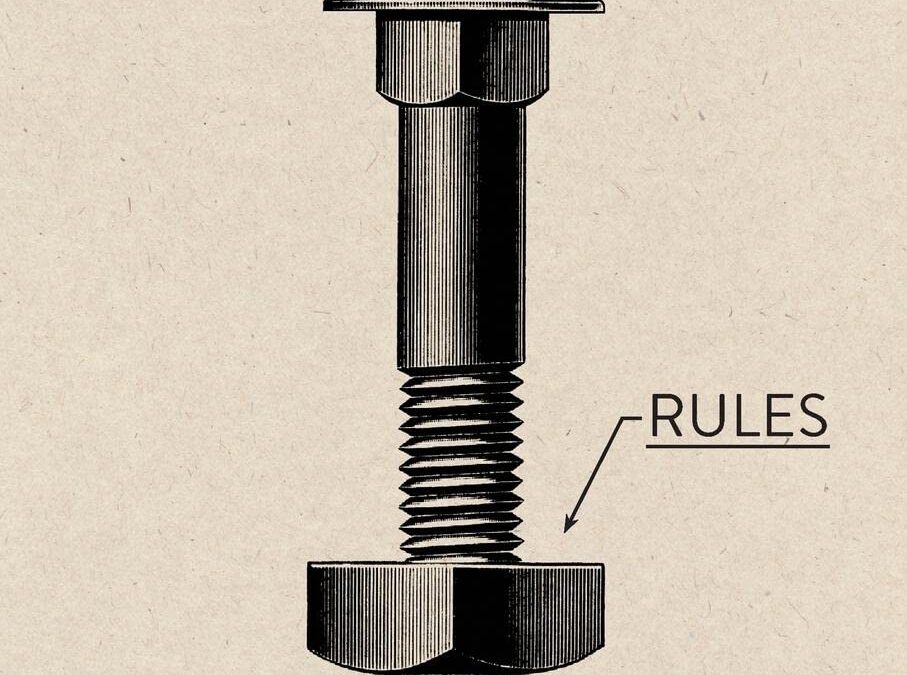

Satisfy your dream collector-car desires with this one-stop reference for starting or expanding your collection beyond traditional classics and muscle cars.
Focusing on the interests and needs of Generation X and Millennial car collectors, The NextGen Guide to Car Collecting offers a concise history of car collecting to present day, guidance on car buying and living the car-collector life, and an overview of collector cars with a focus on cars built from the 1970s through the 1990s while also touching on more contemporary cars. Chapters highlight Japanese, American, and European cars, particularly those models that have experienced the greatest growth in collector interest over the past decade.
The NextGen Guide to Car Collecting explores the many ways the Internet and social media have changed the classic car marketplace. You’ll learn how to buy a classic car online without suffering buyer’s remorse, as well as the four critical keys to a happy collector-vehicle relationship: 1) possessing discretionary cash for the initial purchase; 2) obtaining a thorough knowledge of the car and its ownership; 3) the critical pre-purchase inspection; and 4) access to a work space.
You’ll also find out why the popularity of late twentieth-century specialty cars will continue to grow (think increasing electronic complication and the still-large number of enthusiasts for whom “self-driving” means driving themselves) and explore the attributes that makes these cars desirable collector vehicles.
In addition, the book looks at the significant increases in quality and reliability of post-1970s machines and how that impacts their collectibility. Finally, learn why expectations that your newfound classic could outlast our current crop of lithium-ion-dependent electric cars may not be unrealistic: recent developments like ride-hailing and sharing services; expanded public transit; rental bikes and scooters; and garage condos and other storage options could actually extend the life of your “new” classic permitting you to truly tailor the use of your classics.
Whether your collection requires a one-stall garage or a pole barn, the practical, useful information and keen perspective of The NextGen Guide to Car Collecting will ensure you pull this volume from your shelf time and again.
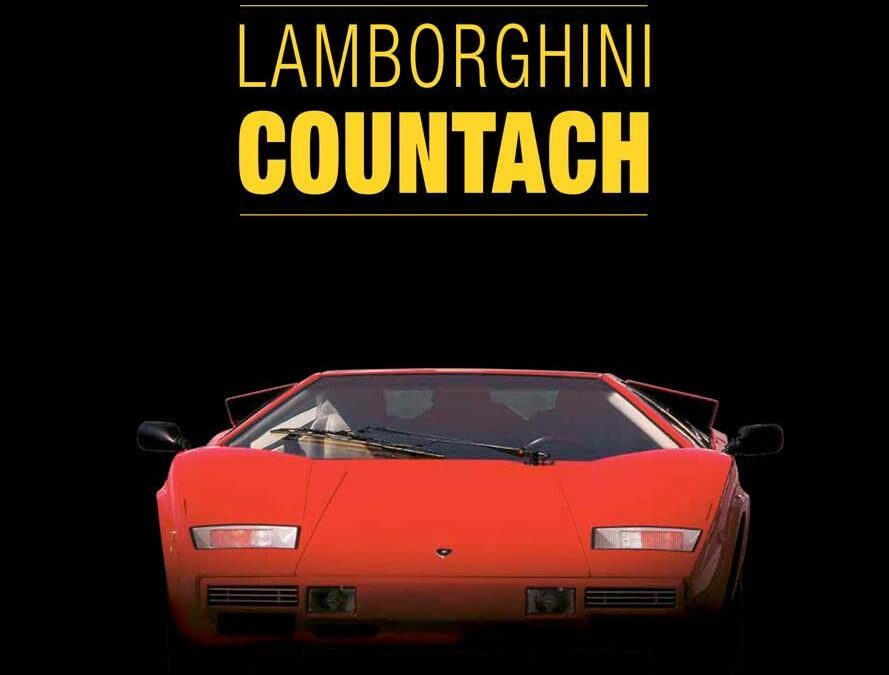
The Lamborghini Countach: a remarkable supercar, a car of extreme and timeless appeal is the protagonist of this new monograph.
The book opens with the long period of gestation in which Marcello Gandini – then head of design at Carrozzeria Bertone – defined the futuristic lines of a car that, to many at first sight seemed to have come from another planet thanks to the taut, sharply creased lines of its bodywork and its muscular mechanical specification, with the V12 engine located behind the driver’s shoulders. When it progressed from a concept to a production model (LP 400), the Countach successfully maintained its charisma, becoming one of the most enduring supercars of all.
The thorough text draws on the direct testimony of many of the figures who contributed to the creation of the Countach: from Marcello Gandini to Giampaolo Dallara and through to the invaluable insights provided by the daughter of Paolo Stanzani.
The book covers all the principal versions of the Countach: from the first LP 500 to the LP 400, from the 48-valve to the monstrous 5000 QW through to the 25 Anniversario that in 1990 represented the final chapter in the history of this unforgettable car.
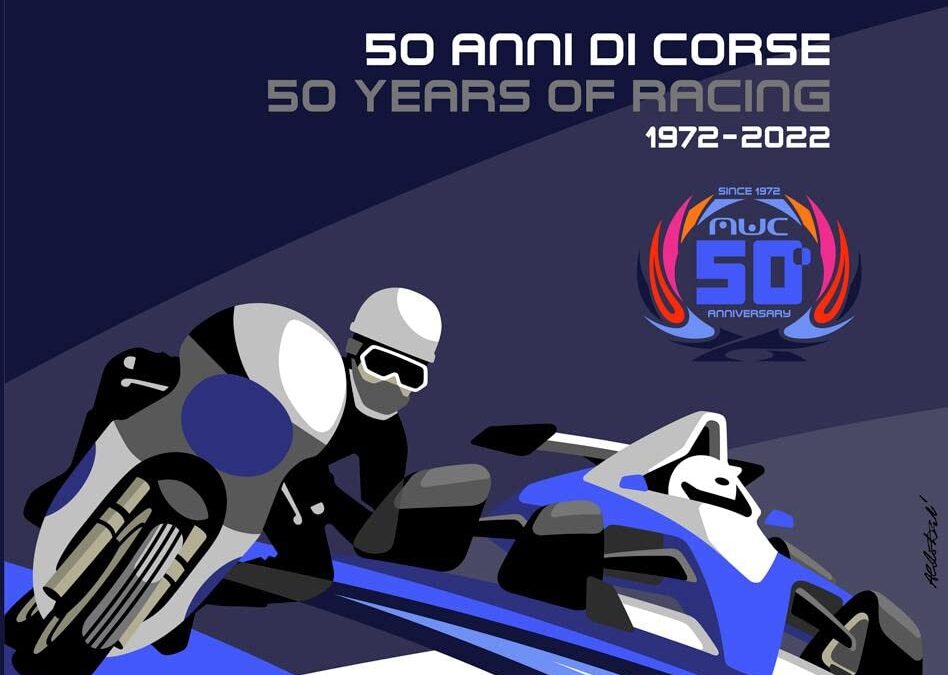
This book presents the first 50 years of the history of the Misano World Circuit “Marco Simoncelli”.
This historic track – the “Autodromo del mare” or seaside circuit – has witnessed unforgettable chapters in the history of motorsport, on two wheels and four, from the very first season in 1972 when the facility was inaugurated, through to the present day. The texts and the extraordinary photographs accompany readers along a thrilling exploration of the history of a circuit that has hosted the world’s greatest riders and drivers from every decade.
In a chronological narration that sets out from Emilia-Romagna’s Motor Valley of the early 20th century, the book describes the principal races held at the Misano circuit, from the pioneering 1970s with the unforgettable duels on two wheels involving the likes of Giacomo Agostini and Renzo Pasolini to those on four wheels featuring Italian and international drivers. Then came the 1980s, with the motorcycling World Championship arriving on the Riviera together with F.2 and F.3 single-seaters and sports prototype and GT cars. The 1990s instead heralded the Superbike championship and the Super Turismo touring cars. The new millennium has seen the circuit develop into an avant-garde facility on all fronts, capable of hosting international events and prestigious collateral events.
The volume is edited by Marco Montemaggi, coordinator and author of numerous books on Italian industrial culture and, in the motor industry, former director of the Ducati Museum and former scientific curator of the Motor Valley project. A scientific committee made up of highly experienced authors and personalities such as Andrea Albani, Davide Bagnaresi, Marco Masetti, Luigi Rivola and Sergio Remondino contributed with passion to the creation of the volume, assisted by many of the protagonists of Italian motorsport, always close to the Misano World Circuit.
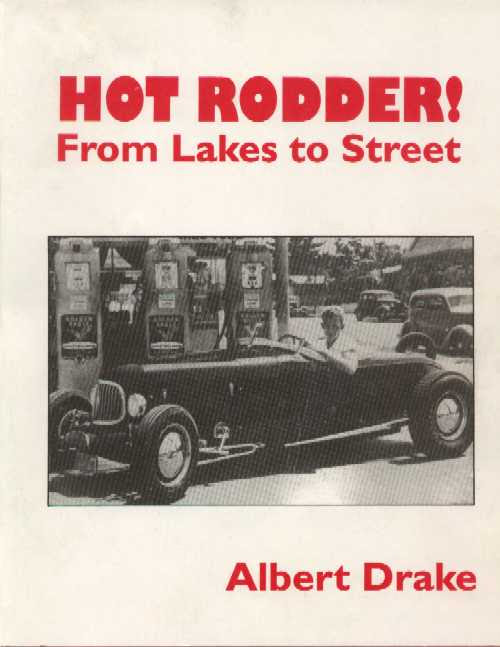
SIGNED
The first history of hot rodding, from the 1920s to the 1990s, as told in the participants’ own words. A 17-year project, this book includes chapters on the early years, California dry lake time trials, circle track roadsters, Bonneville, custom cars and street rodding.
The 23 oral histories here include the well-known and less well-known, among them Karl and Veda Orr, Burke LeSage, William Kenz, Joe Bailon, Bob Kaiser, Dee Wescott, Big Bill Edwards, Dick Ford, Jack Henry and more. Writers interviewed include Henry Gregor Felsen, Roger Huntington and Peter Sukalac.
The text is substantial; the book aims at people who love to read, especially about hot rod history. It contains information and anecdote that cannot be found elsewhere and, since many of the participants have passed away, would otherwise be lost. The book has 200 photographs, most of them rare. There are photos of cars that have never been written about, such as the Weinberg roadster, perhaps the most exotic hot rod ever built; the Houle-Henry roadster, Dick Ford’s 129 A-V8, built in 1945; etc.
Soft bound, 8 1/2″ x 11″, 176 pages, 200 photographs.















